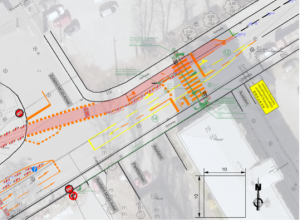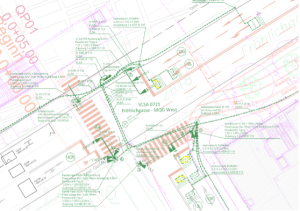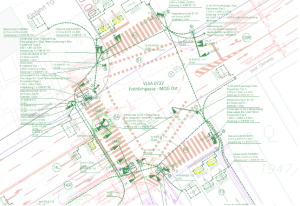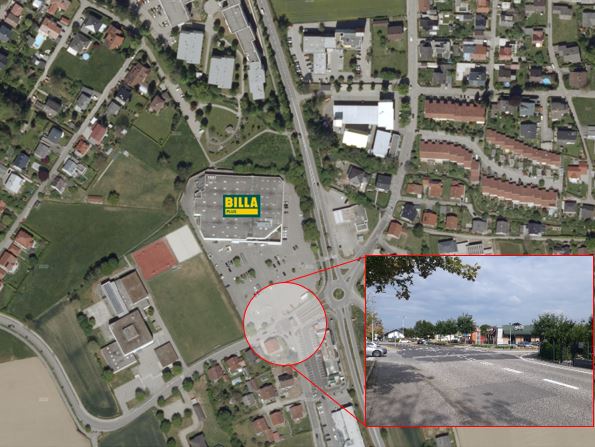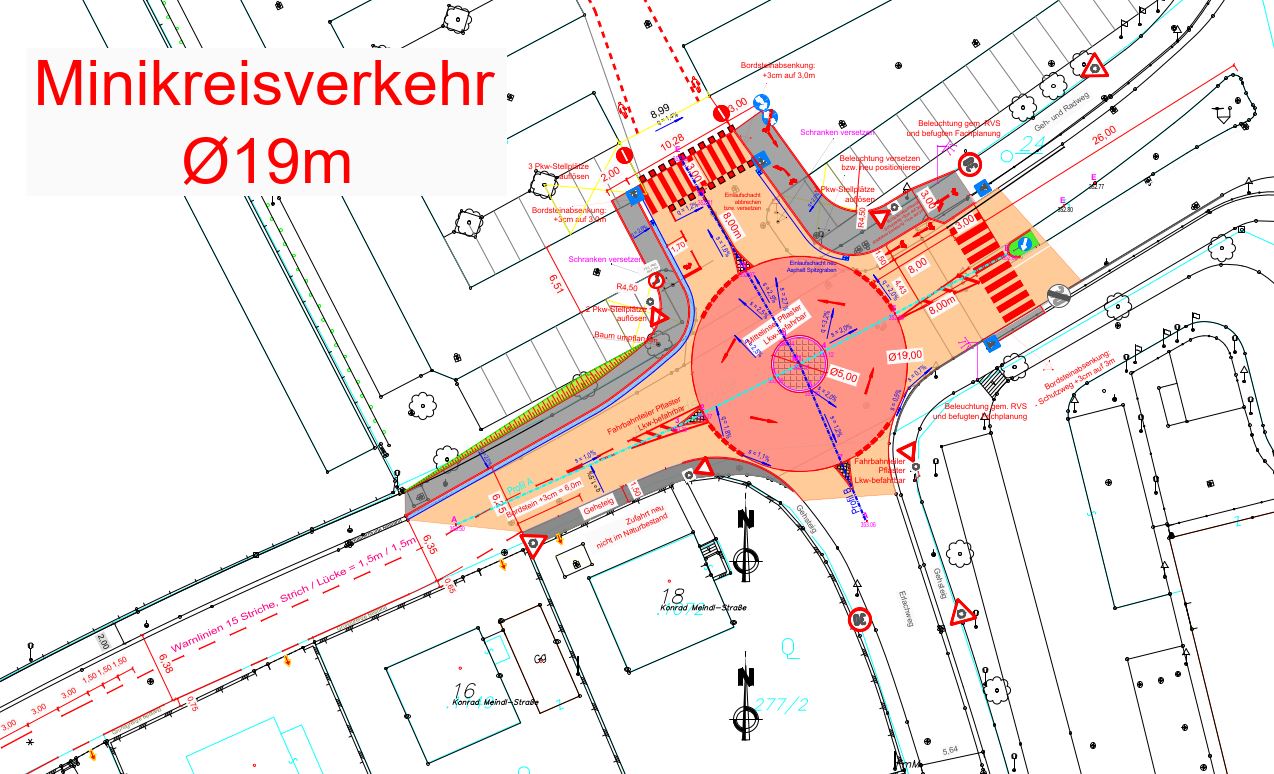Home, Uncategorized
Feasibility Study on the Implementation of a Tram System in Port of Spain (Trinidad and Tobago)
For the feasibility study on the implementation of a streetcar system in the capital of Trinidad and Tobago Port of Spain, a detailed analysis of the mobility offer was made at the beginning. With the help of the resident institutions and ministries, data was gathered that made this analysis possible, and more was compiled through Internet research and in close consultation with the clients. The analysis resulted in a SWOT analysis, which was used as a basis for the development of the streetcar solution.
In a further step, forecasts for further development, in particular with regard to traffic development, were drawn up on the basis of population development. Assumptions were made about the current modal split, as there is no meaningful data on this. The clients agreed with the assumptions, which made it possible to calculate the displacement potential for the streetcar based on the forecasts made.
Finally, based on the forecasts and the displacement potential, rough cost calculations were made to assess whether the implementation of a streetcar system is profitable or not. The feasibility study was rounded out by a utility analysis comparing the streetcar system to the (congested) existing system and an expansion of the existing bus system. The calculations showed that it is worthwhile for Port of Spain to consider implementation, as it can bring social and economic benefits in addition to environmental effects.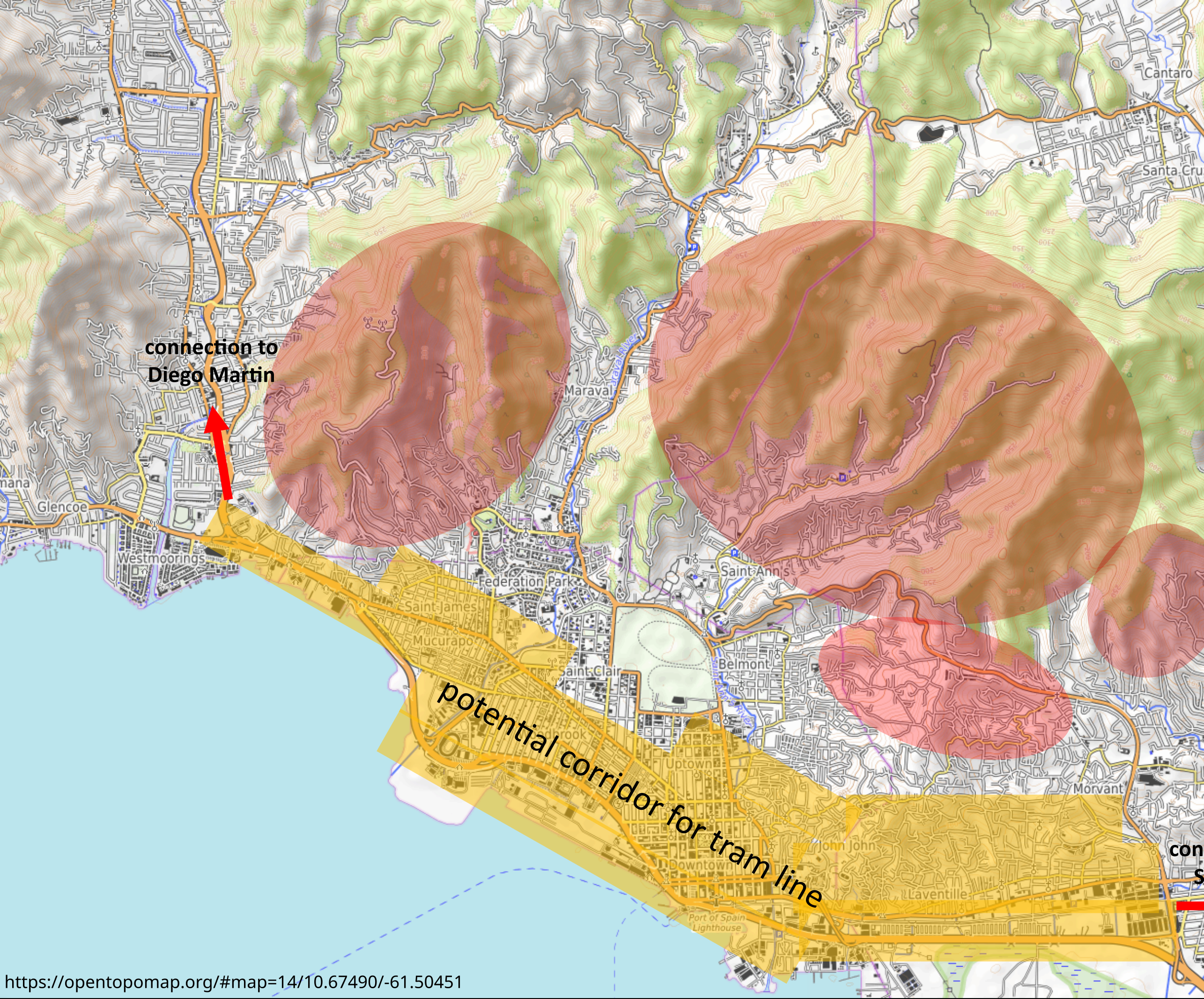
Figure: Potential streetcar corridor through Port of Spain with connections to neighboring cities (PLANUM 2023 with data from opentopomap.org, 2023).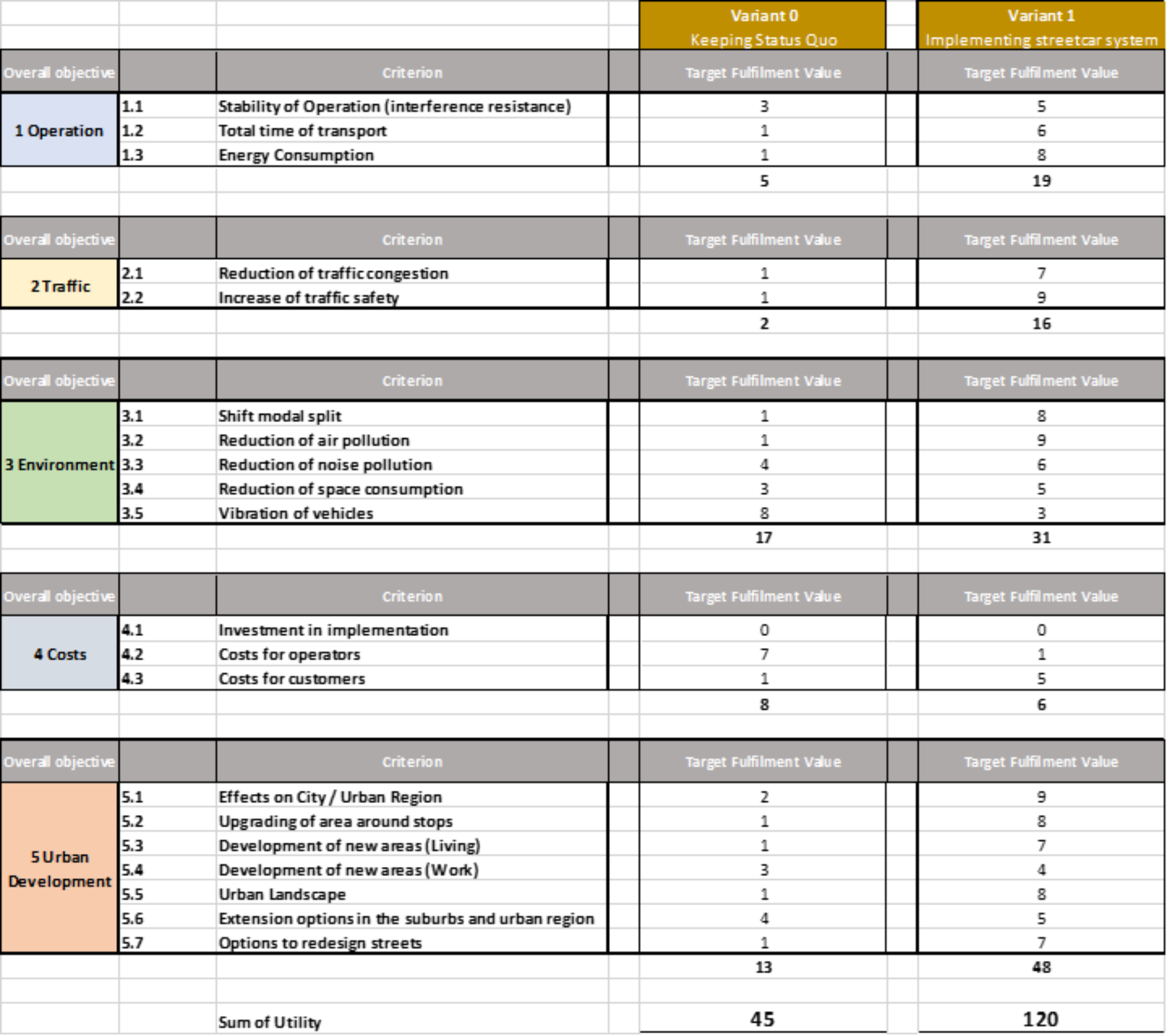
Figure: Benefit analysis for the streetcar system in Port of Spain (PLANUM 2023)
Contact person:
Anna-Sophie Klamminger, Kurt Fallast

